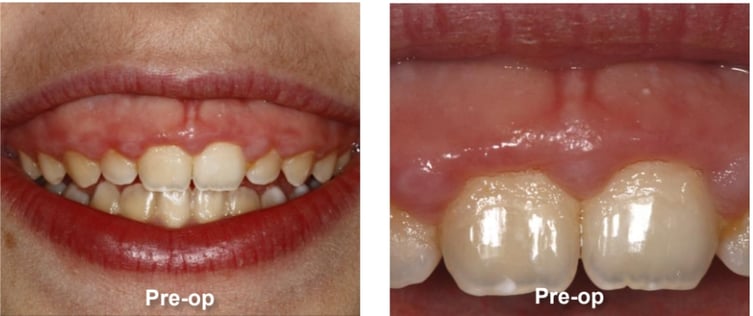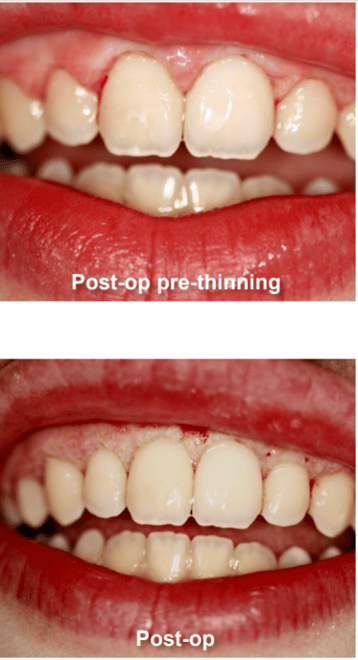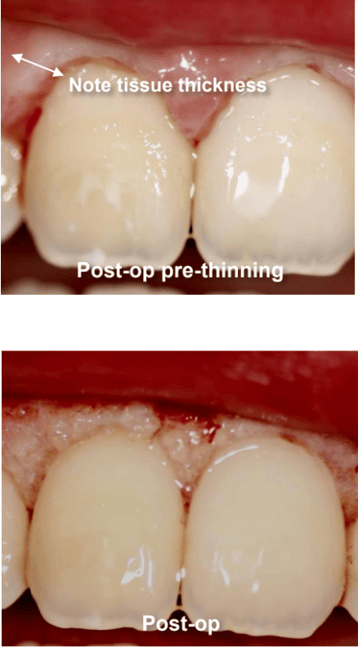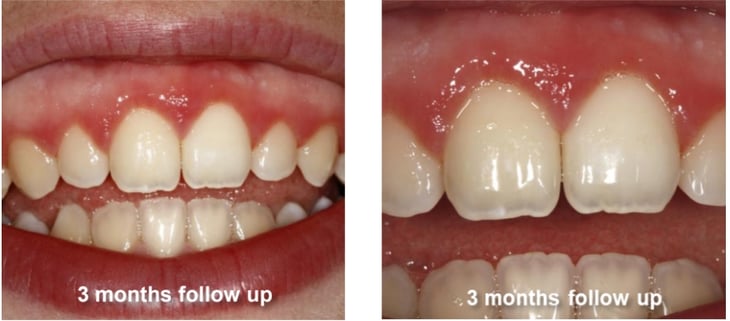Gingivectomy and Maxillary Frenectomy
2 MIN READ
Gingivectomy and Maxillary Frenectomy
By Joshua Weintraub, DDS on May 11, 2022
Case Summary:
A 13-year-old female, who has been a patient of the practice since she was 2 years old, presented for her surgical appointment. The patient was unhappy with the appearance of her smile after the orthodontic treatment. The oral evaluation revealed that she had a hypermobile lip and showed too much of her gingiva and maxillary frenum when she smiled. The patient was diagnosed with gingival hyperplasia. Her etiology is a combination of hormone induced and post orthodontic hypertrophic gingiva combined with a very thick biotype. The clinical objective was to remove the excessive gingiva to make her smile more esthetically pleasing. In addition, a maxillary frenectomy was indicated. Total treatment time from start to finish was 45 minutes.

Technique Used:
Only topical anesthetic (TAC) and nitrous oxide were used for this surgery, no injectable anesthetic was administered. The 1 mm spot size with 30-50% cutting speed and 20% mist were used to ablate and shape the gingiva to lengthen the display of the teeth. Then, without stopping or changing any parameters on Solea, the dentist performed a frenectomy and a minor vestibuloplasty. He also had to thin the very thick gingival tissue to prevent it from growing back. The 1.25 mm spot size with 30-50% cutting speed and 20% mist was applied to externally remove layers of tissue until the desired thickness was achieved.


Results:
The remarkable precision of Solea resulted in a clinical outcome that would otherwise be incredibly difficult to achieve and may have been referred out. Without Solea, the dentist would have needed to administer several injections. He would have also found it very difficult to achieve such an outstanding clinical outcome due to excessive bleeding. As the patient was not numb, the smile could be evaluated during and after the procedure accurately. The use of traditional instruments or other lasers would have caused the patient significant post-operative pain and a longer recovery. With Solea, treatment was much faster than the hour and a half necessary using other instruments. The patient was very happy with the way her smile appeared immediately after the surgery was completed. With any other techniques, including utilizing other lasers, the esthetics for the first several days would be quite unattractive. She also reported no post-operative pain and very fast healing during her follow-up appointment.

Solea Advantage:
- The whole operation was performed without an injectable aesthetic and virtually blood-free
- The dentist was able to achieve impressive clinical results by easily completing multiple steps of this treatment in a blood-free field instead of having to control bleeding.
- The healing was incredibly fast with minimal post-op discomfort.
- The dentist delivered an impeccable patient experience including not administering anesthesia, a shorter appointment time, and increased patient comfort.
- Without Solea, the dentist may have referred this procedure out.
A Novel Approach to Treating Hairy Tongue
Case Summary: A 69-year-old woman presented to the clinic at Midwestern Universi...
2 min read
Infant Lingual and Maxillary Frenectomies
Case Summary: The patient, a 10-week-old male infant, presented with a Class III...
2 min read

